Abstract
The evaluation of nutritional status using anthropometry has been widely employed in field studies and nutritional surveillance programmes. Two of the primary indicators used, weight-for-age and height-for-age, require accurate age information for proper assessments to be made. Three data sets on nutritional status were evaluated using different methods to determine age: rounding to the most recently attained month, rounding to the nearest whole month, and ages computed from birth dates and visit dates. The impact of these different methods on the classification of nutritional status were found to be dramatic, especially in infants during the first year of life. In some cases, when ages are rounded to the most recently attained month, as few as 43% of the children classified as malnourished based on the indicator, height-for-age, and the cut-off point, less than -2 Standard Deviations from the reference median, are identified relative to when ages are computed from birth and visit dates. Beyond the discrepancies in estimating prevalence below specific cut-off points to designate undernutrition, the use of the different methods also affects entire distributions. The problem of using different methods to estimate age, and the impact they have on the classification of undernutrition are of critical public health importance, especially when this information is used to identify individuals and groups as well as for planning and policy development.
Full text
PDF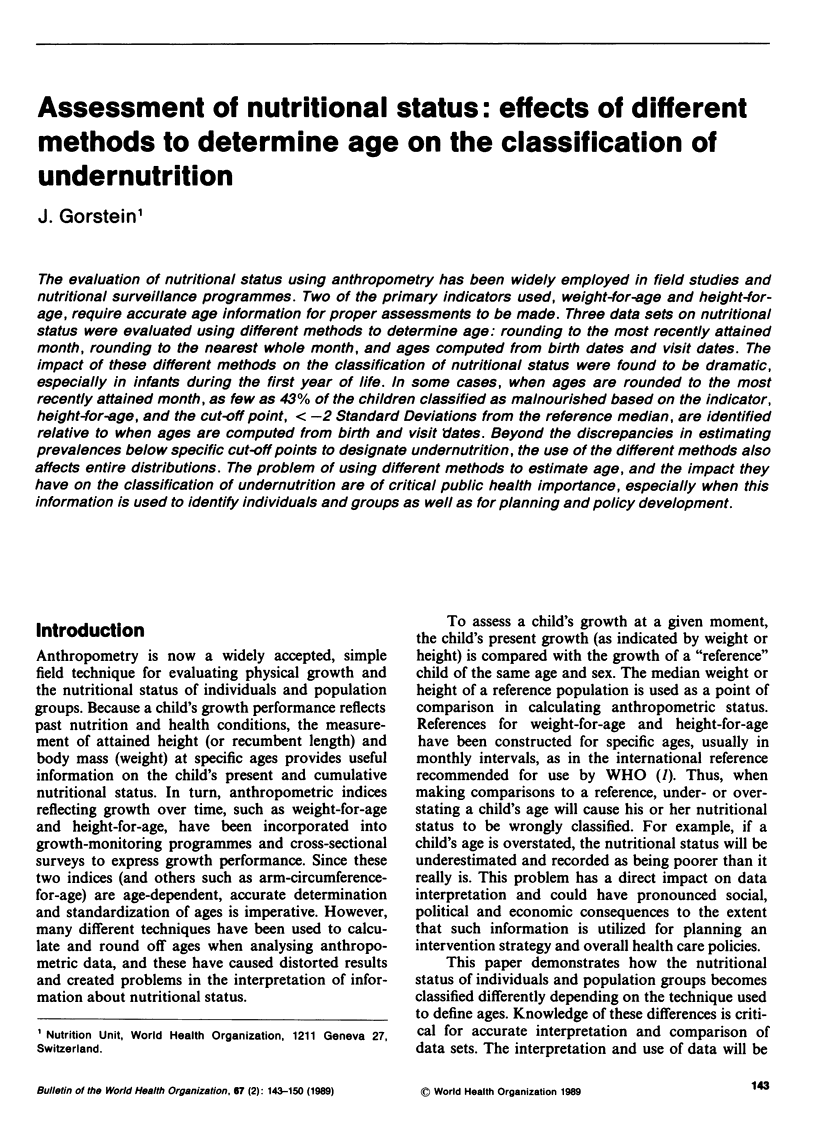

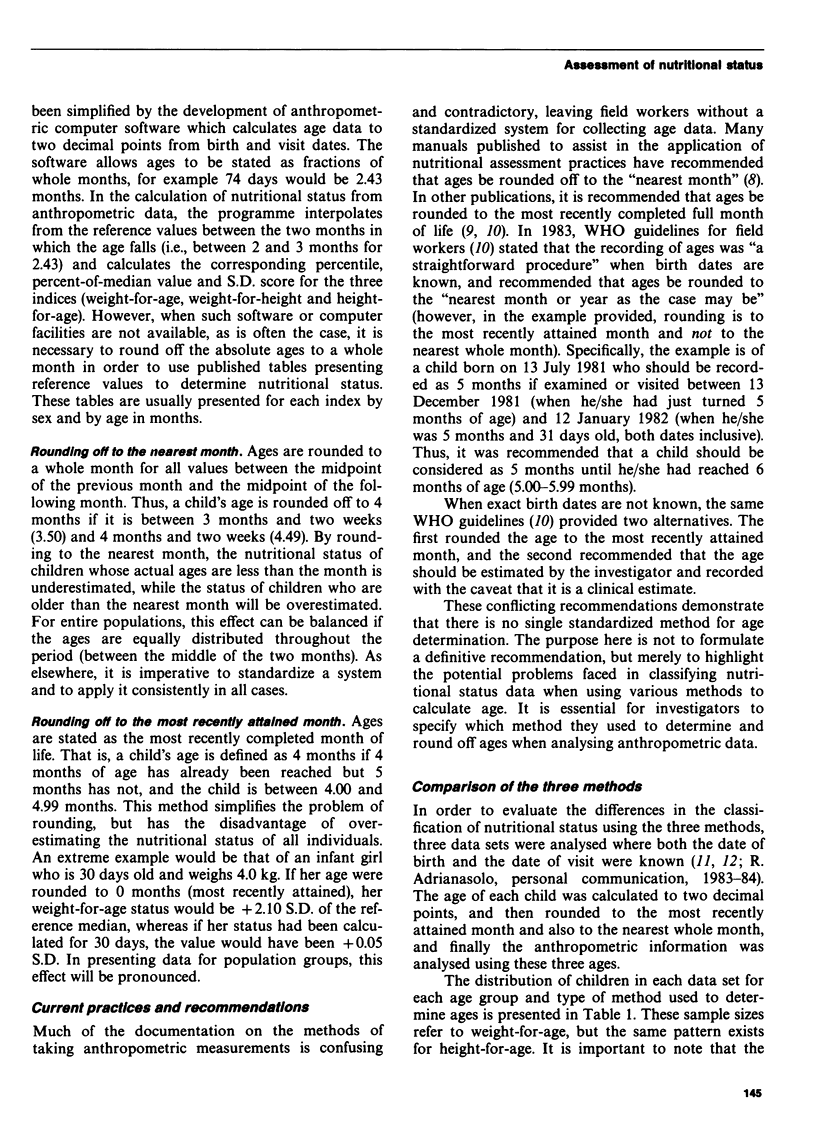
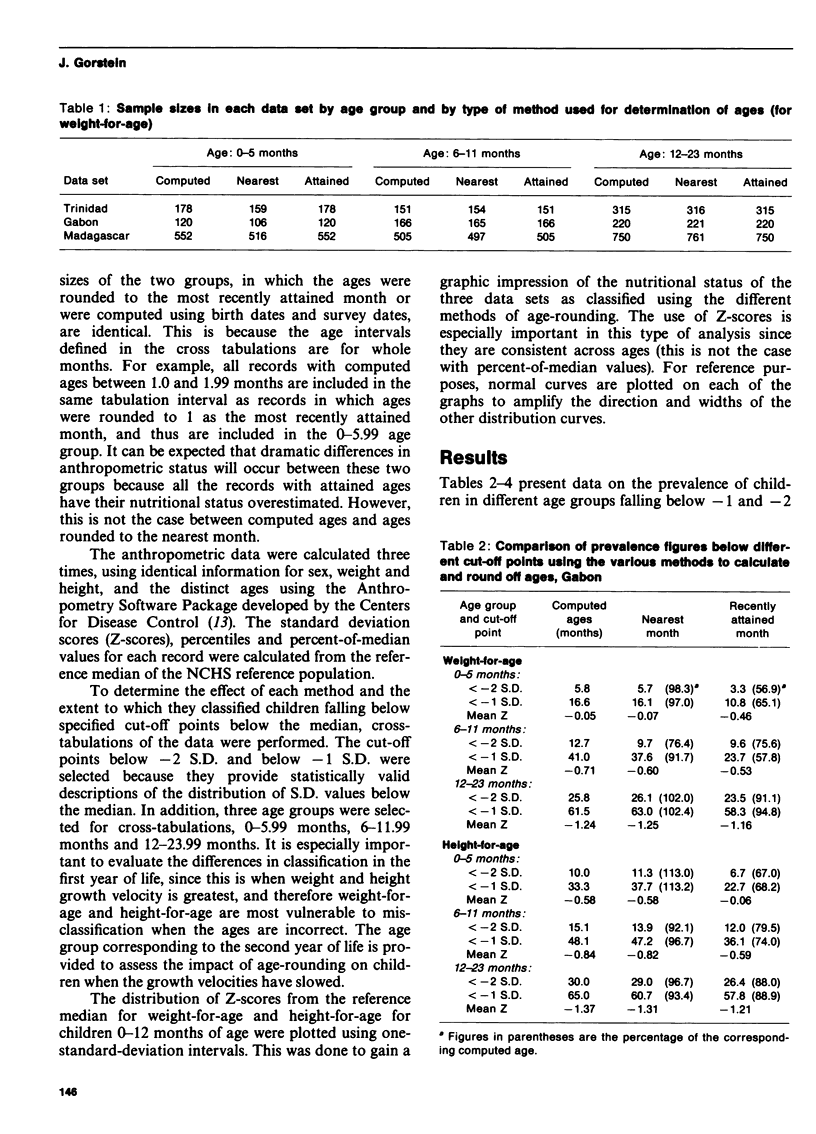
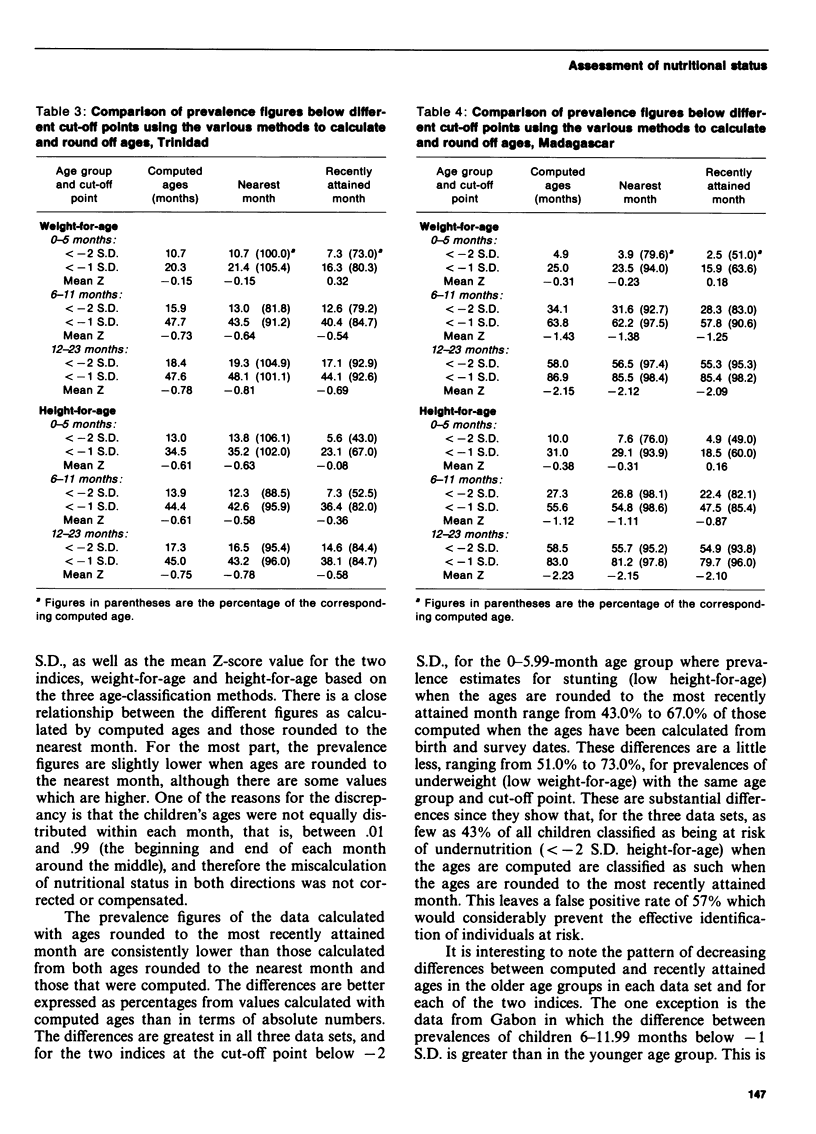
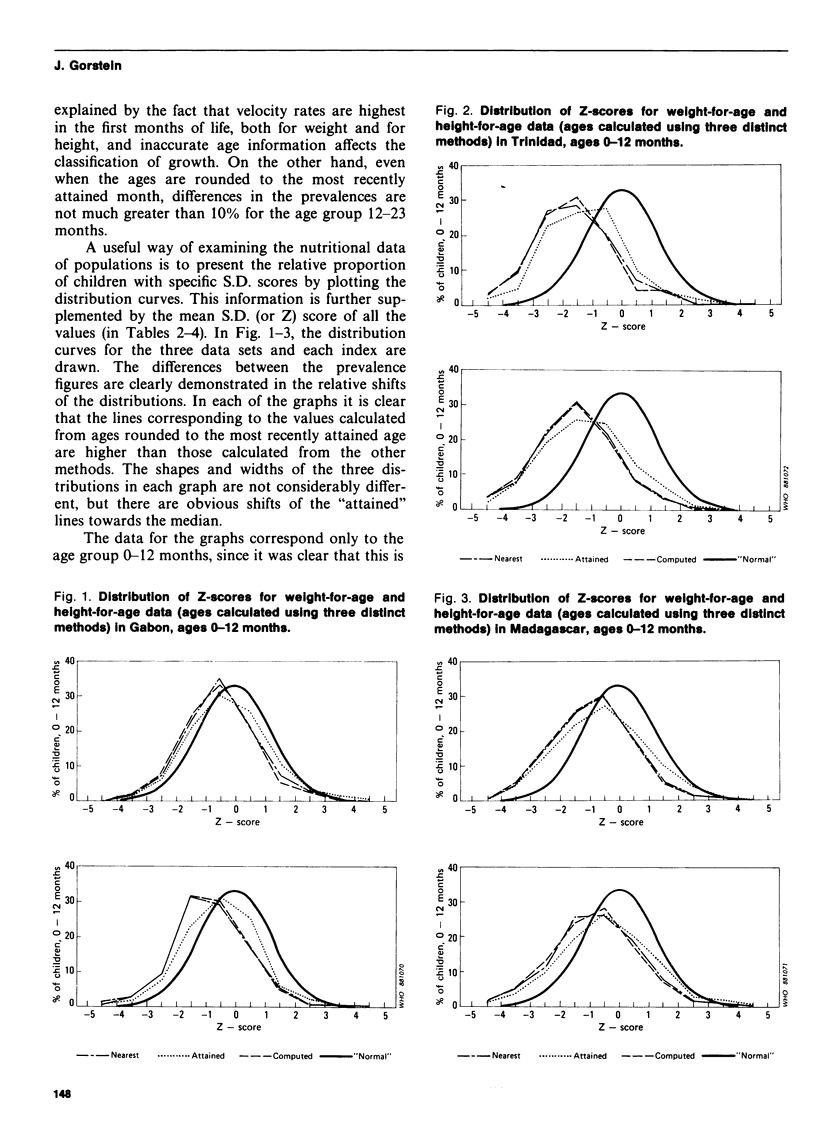
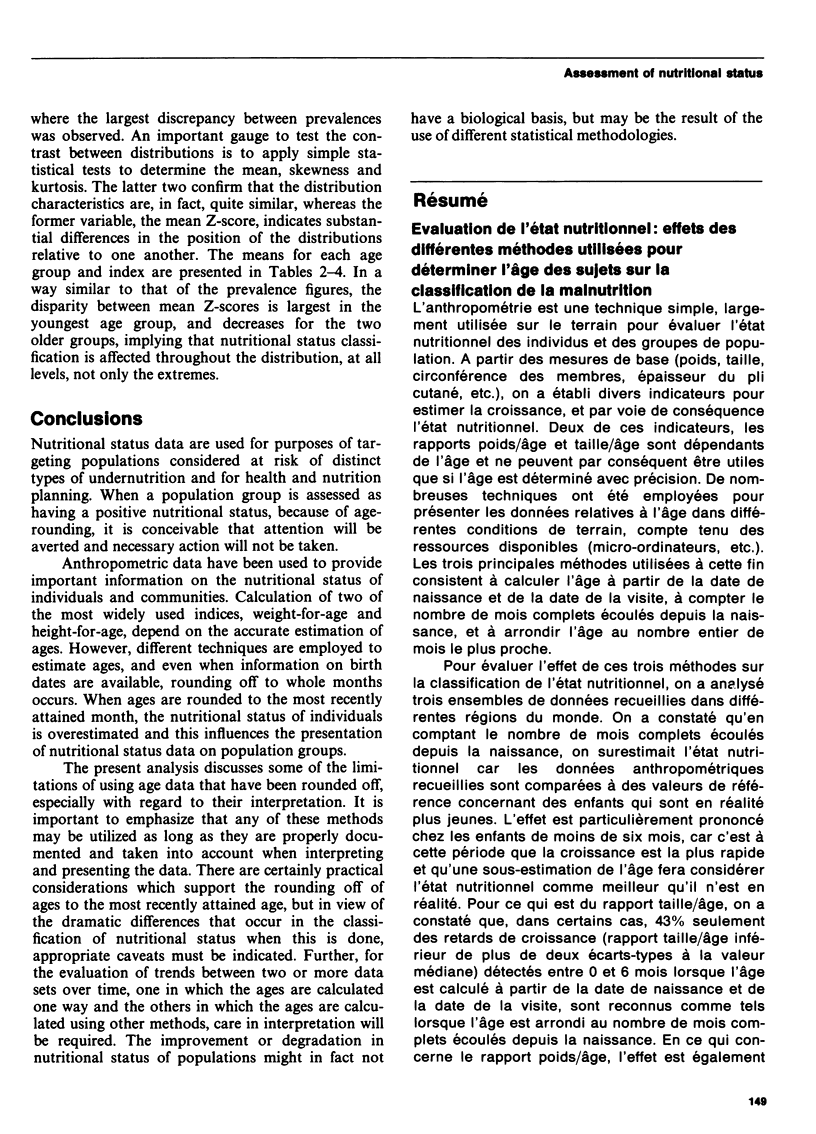
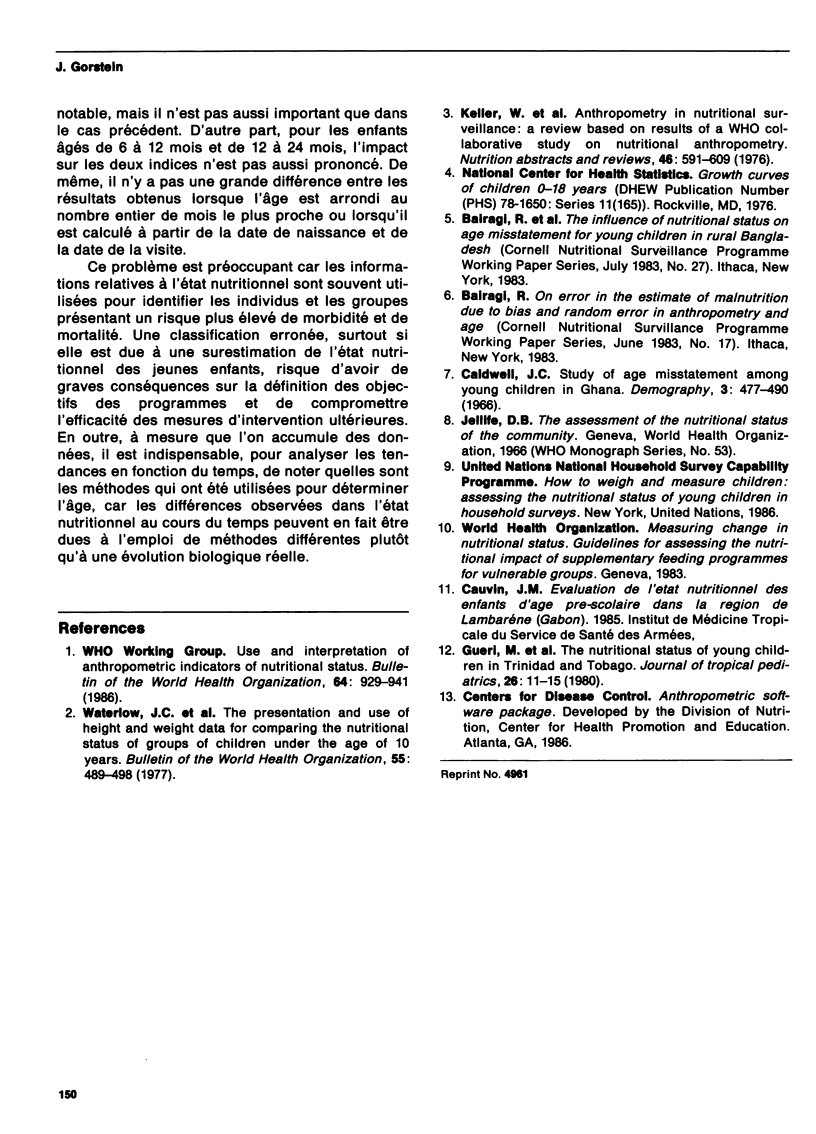
Selected References
These references are in PubMed. This may not be the complete list of references from this article.
- Waterlow J. C., Buzina R., Keller W., Lane J. M., Nichaman M. Z., Tanner J. M. The presentation and use of height and weight data for comparing the nutritional status of groups of children under the age of 10 years. Bull World Health Organ. 1977;55(4):489–498. [PMC free article] [PubMed] [Google Scholar]


